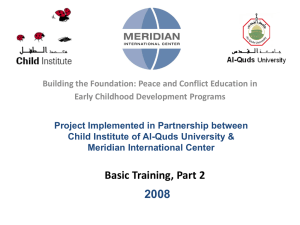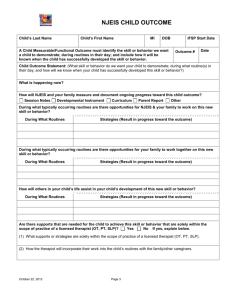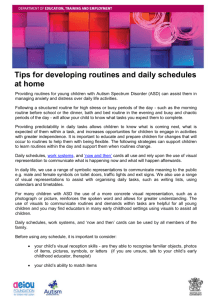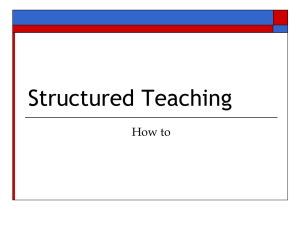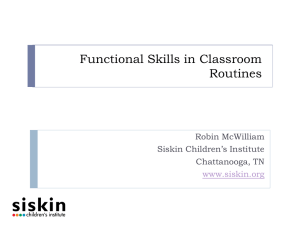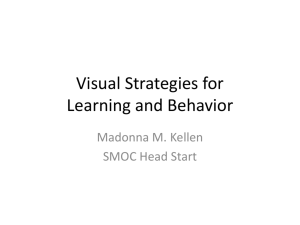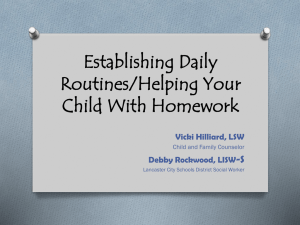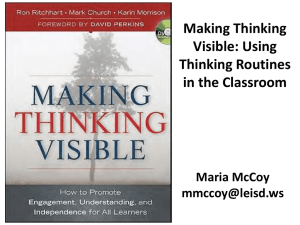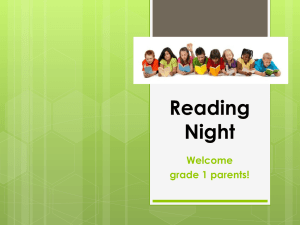PPT
advertisement
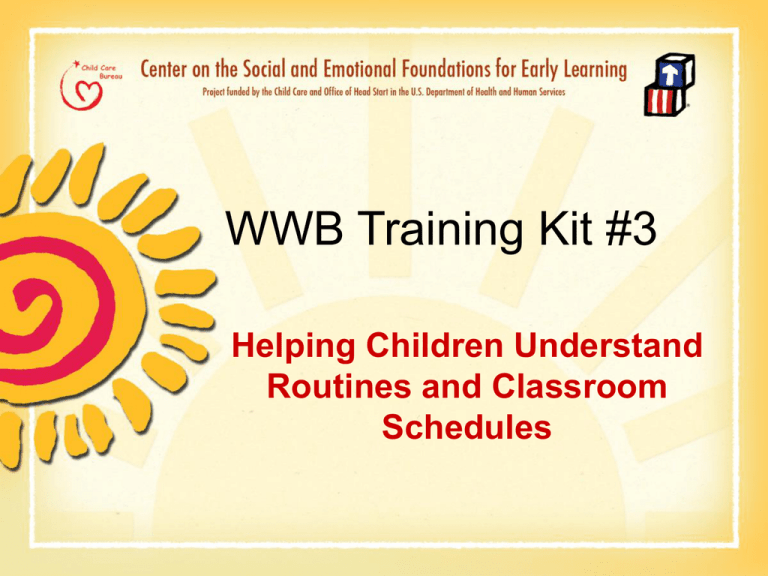
WWB Training Kit #3 Helping Children Understand Routines and Classroom Schedules Routines vs. Schedules • The terms routines and schedules are often used interchangeably. • ________ represent the big picture. – • Main activities to be completed daily. ________represent the steps done to complete the schedule. Routines vs. Schedules • Routines and schedules need to be directly _______ • Routines and schedules may vary – – Routines Are activities and procedures that ____________ Often involve a ________________________ Preschool routines typically include: Daily Schedule • Blocks of time for classroom activities • Sequence of classroom activities • Preschool schedules typically include: – – – – Routines and schedules are important because: They __________ a child’s emotional, cognitive and social development. They help children feel _________. They help children understand _____. They help reduce _______________. They can result in higher rates of child ____________. Things to Consider in Daily Schedule Planning: Balance the activities Number of activities available Number of adults available Child’s attention span Child’s level of alertness Child’s cultural and linguistic background Longer play periods result in increased play behaviors What Makes a Good Daily Schedule? • Balance of Activities Active and Quiet Large Group and Small Group Indoor and Outdoor Child-Directed and Teacher-Directed • Visual Cue – Use of daily picture schedule – www.environments.com Additional Resources • www.environments.com to create and print free daily routine labels
